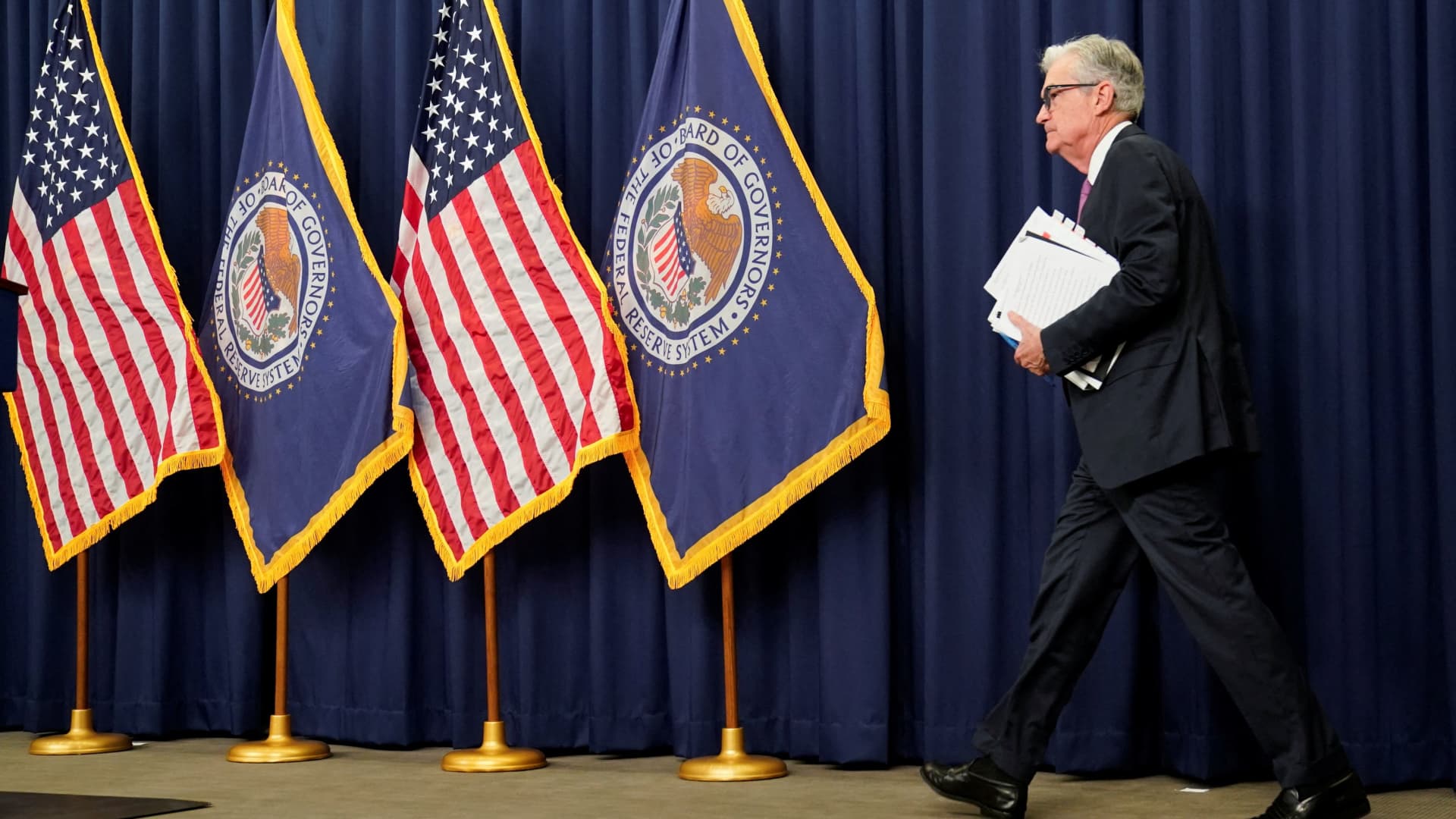Federal Reserve Board Chairman Jerome Powell arrives for a news conference following a two-day meeting of the Federal Open Market Committee (FOMC) in Washington, July 27, 2022.
Elizabeth Frantz | Reuters
Maybe it’s time for the Federal Reserve to revive the word “transitional” after all.
While the first dictionary definition of “transient” is “short-lived”, additional definitions describe the term “transient” as “not permanent”.
I like this definition and believe this is how the Fed saw the meaning of the word when describing post-pandemic inflation.
First of all, nothing is permanent… on that we all agree.
Second, if, indeed, we have seen a “peak inflation,” then describing inflation as “transient” was entirely accurate from the start of this economic environment.
As discussed in previous columns, I have argued that the current environment reflects the post-war periods following World War I and World War II in which supply-constrained economies encountered rebounding demand more rapidly.
The resulting bouts of inflation from 1918 to 1920 and from 1947 to around 1950 proved to be “transient” as inflation rates returned to normal, or in some cases even below normal once supply/demand balances restored.
We see it today.
Commodity prices have fallen sharply from their highs, house prices in some parts of the country have not only stopped rising, but have begun to fall, as housing supply hits the market. market and sellers lower their asking prices.
Lower costs at all levels
I spoke a few days ago with a gentleman whose business is the luxury recreational vehicle market. He noted that parts are increasingly available, delivered on time and, in some cases, he is again able to negotiate prices with his suppliers.
It’s a unique anecdote, of course, but it can also be indicative of what we see in the empirical data.
Shipping costs are plummeting. Delivery times are getting shorter. Port congestion begins to disappear and manufactured goods become more readily available.
Services inflation remains sticky, but with consumer demand waning, prices could also start falling soon.
Interestingly, despite all the claims that consumers continue to have pandemic payment cash, consumer credit jumped $40 billion last month, suggesting that consumers may have reduced their excess savings. and are turning to credit to extend their purchasing power.
This usually doesn’t last very long in the face of a slowing economy. It’s also worth noting that in China, the real estate market there is imploding while the Financial Times reports that prices for luxury goods in China plunge 20-40%, from high-end watches to Birkin bags.
China, still an exporter, may well export disinflation to the rest of the world, as its economy slows faster than economists had expected.
Market signals
Financial markets have also been anticipating a “peak inflation” for a few weeks now.
Bond yields peaked in June, with 10-year Treasuries nearing 3.5% and now sitting three-quarters of a percentage point below that level.
Stock prices have rebounded and inflation data itself, although a month does not constitute a trend, has stopped rising or, in the case of wholesale prices, has fallen by half a percent in July.
Maybe it’s time to give Merriam-Webster a second look and revive the word transient.
Unlike the 15 years of accelerating inflation, from 1966 to 1980, which, although “transient”, seemed permanent to many of us, the US and global economies only had about a single year. of rising prices which could already be trending down.
If that’s not what transient means, I don’t know what does.

